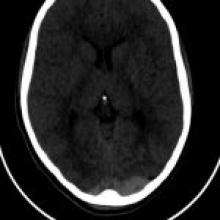June 2, 2022
A 15-year-old presents to the emergency department after being hit by a car while riding his bicycle. He has had increasing headaches and vomiting since the accident, with clinical evidence of head trauma with palpable hematoma in the left occipitoparietal region.







